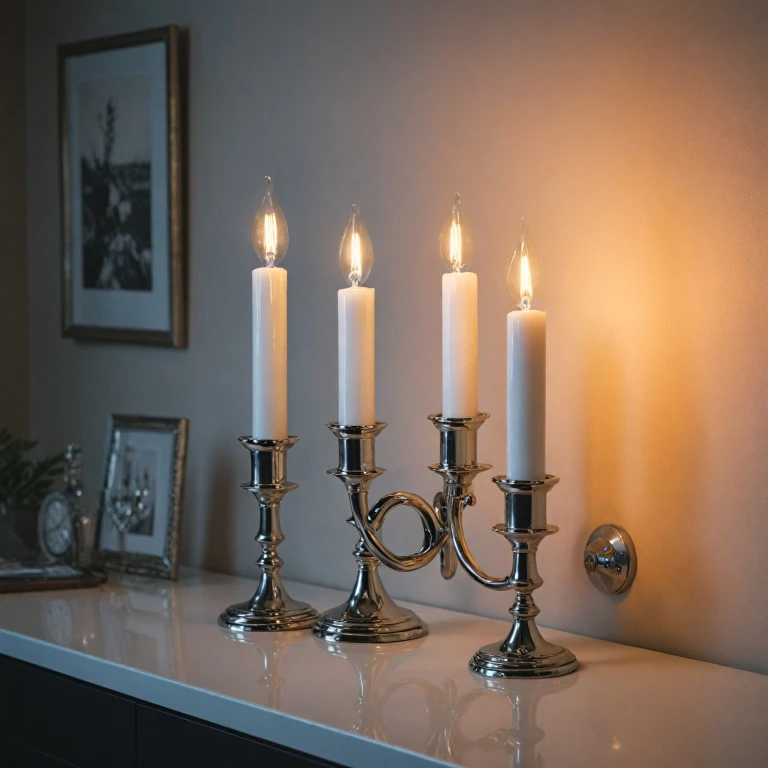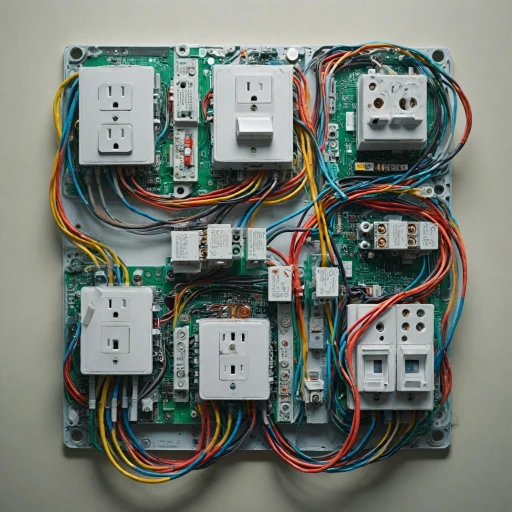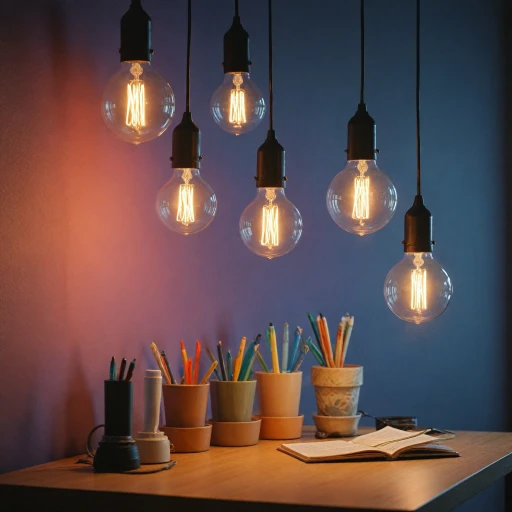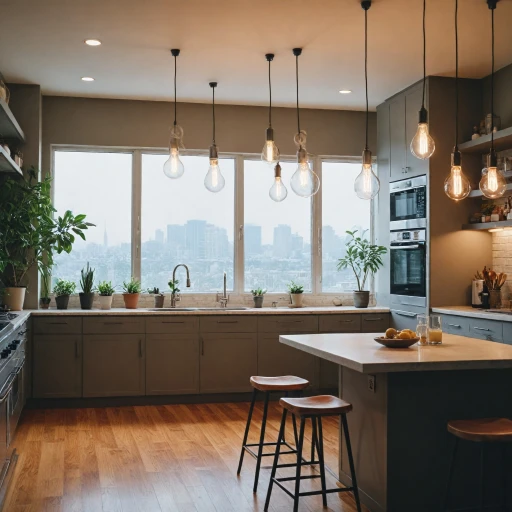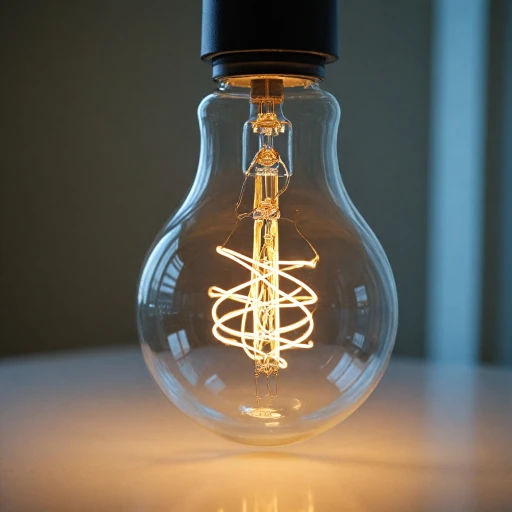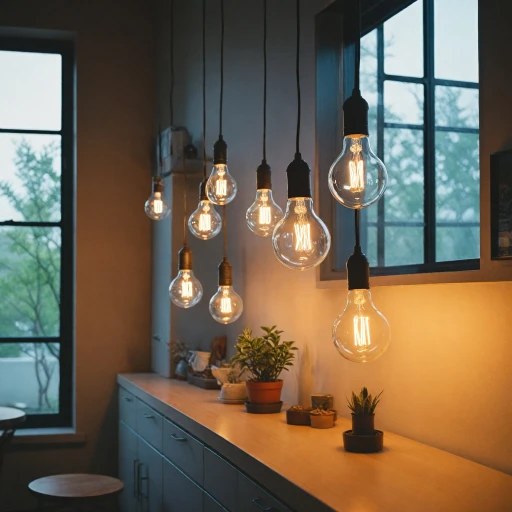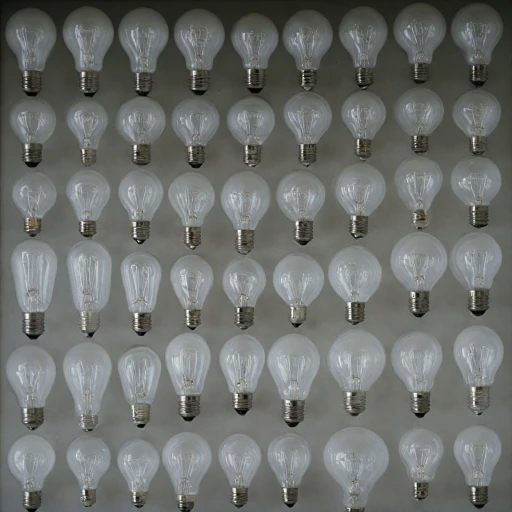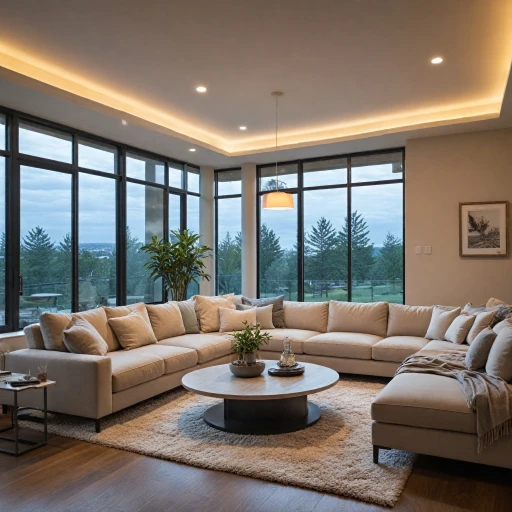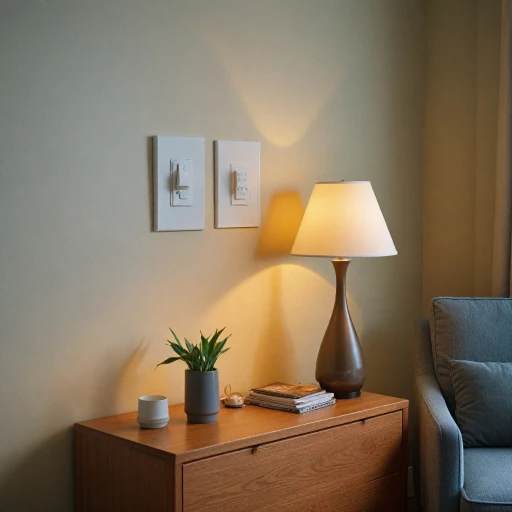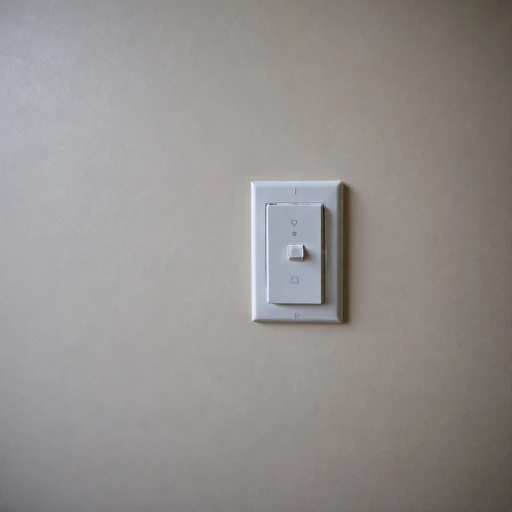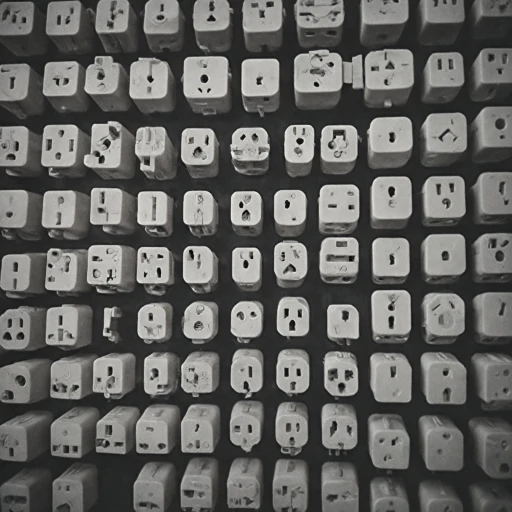
What is a Candelabra Socket?
Exploring the Basics of Candelabra Sockets
Candelabra sockets are a fundamental component in the realm of smart lighting, often used in decorative fixtures like chandeliers and wall sconces. These sockets are specifically designed to accommodate candelabra base bulbs, which are smaller than the standard bulbs you might find in most household lamps. The candelabra socket is typically characterized by its smaller diameter, usually around 0.47 inches, making it ideal for fixtures where space is limited.
When considering the materials, candelabra sockets can be made from various substances, including phenolic and porcelain. A phenolic socket is known for its durability and heat resistance, while a porcelain candelabra socket offers a more traditional look and can withstand higher temperatures. Both types are available in keyless and regular configurations, with the keyless option being more common in smart lighting setups due to its streamlined design.
In terms of pricing, the unit price for candelabra sockets can vary based on material and design. While a keyless porcelain socket might come at a higher regular price, it often offers better longevity and aesthetic appeal. On the other hand, a phenolic candelabra socket might be more budget-friendly, especially if purchased during a sale.
For those interested in integrating smart lighting, understanding the versatility of these sockets is crucial. They serve as the base socket for smart bulbs, which can transform a simple fixture into a connected, intelligent lighting solution. This adaptability is a key factor in the growing popularity of smart lighting systems.
To delve deeper into the versatility of these components in smart lighting, you might find this resource helpful.
Integrating Candelabra Sockets with Smart Bulbs
Seamless Integration of Smart Bulbs with Candelabra Sockets
Integrating smart bulbs with candelabra sockets is a straightforward process, yet it requires some understanding of the components involved. The candelabra socket, often referred to as a candle socket, is a smaller socket type typically used in decorative lighting fixtures. These sockets can be made from various materials, including phenolic and porcelain, each offering different benefits in terms of durability and heat resistance.
When choosing a smart bulb for your candelabra socket, it’s crucial to ensure compatibility with the socket base. The candelabra base, also known as an E12 base, is smaller than the standard E26 base used in regular light bulbs. This means that not all smart bulbs will fit into a candelabra socket, so it’s important to verify the bulb’s base size before making a purchase.
Another consideration is the type of socket you have. Some candelabra sockets are keyless, meaning they do not have a switch on the socket itself. This can be beneficial for smart lighting setups, as the smart bulb can be controlled entirely through a smart home system without the need for manual switching. Keyless candelabra sockets are available in both phenolic and porcelain materials, each offering unique advantages.
Wiring is another aspect to consider. Ensure that the socket leads are compatible with your existing wiring setup. This is particularly important if you are replacing an older socket with a new one. For those looking to upgrade their lighting system, understanding LED light connectors can provide additional insights into creating a seamless smart lighting experience.
Finally, consider the price and availability of the components. While some sockets and bulbs might be available at a sale price, it’s essential to ensure they meet your lighting needs and are compatible with your existing setup. Verified purchases and reviews can be helpful in determining the reliability and performance of these products.
Benefits of Using Smart Lighting with Candelabra Sockets
Enhancing Your Home with Smart Lighting
Integrating smart lighting with candelabra sockets offers a range of benefits that can transform the ambiance and functionality of your home. These sockets, often found in decorative fixtures, can be paired with smart bulbs to create a seamless lighting experience.
Energy Efficiency and Cost Savings
One of the primary advantages of using smart lighting with candelabra sockets is energy efficiency. Smart bulbs, when used with a candelabra base, consume less power compared to traditional bulbs. This reduction in energy consumption can lead to significant cost savings over time. Additionally, many smart bulbs offer features like dimming and scheduling, allowing you to further optimize energy use.
Customization and Control
Smart lighting provides unparalleled control over your home’s lighting environment. With a simple app or voice command, you can adjust the brightness, color, and even the timing of your lights. This level of customization is particularly beneficial when using candelabra sockets in fixtures like chandeliers or wall sconces, where the right lighting can dramatically enhance the room's aesthetic.
Convenience and Automation
Another significant benefit is the convenience that comes with automation. Smart bulbs in candelabra sockets can be programmed to turn on or off at specific times, or even respond to your presence in the room. This not only adds to the convenience but also enhances security by making your home appear occupied even when you're away.
Durability and Longevity
Smart bulbs designed for candelabra sockets are often more durable than regular bulbs. They are built to last longer, reducing the frequency of replacements. This durability is particularly advantageous in fixtures that are difficult to reach, such as high ceiling chandeliers.
In summary, integrating smart lighting with candelabra sockets offers numerous benefits, from energy efficiency and cost savings to enhanced control and convenience. As you explore the possibilities, consider the compatibility of your existing fixtures and the specific features you desire in a smart bulb.
Challenges in Smart Lighting with Candelabra Sockets
Addressing Compatibility Issues
One of the primary challenges when integrating smart lighting with candelabra sockets is compatibility. Not all smart bulbs are designed to fit into the unique dimensions of a candelabra base. The standard size of a candelabra socket is smaller than regular sockets, typically around 0.47 inches in diameter. This can limit the selection of smart bulbs available, as many are designed for larger, more common bulb sockets.
Dealing with Material Limitations
Another issue is the material of the socket itself. Candelabra sockets can be made from various materials, such as phenolic or porcelain. While phenolic sockets are cost-effective, they may not always provide the best durability or heat resistance compared to porcelain candelabra sockets. This can affect the longevity and performance of the smart bulbs, especially if they generate more heat than regular bulbs.
Price Considerations
Price is another factor to consider. Smart bulbs that fit candelabra bases can be more expensive than their regular counterparts. The unit price of these specialized bulbs can be higher due to the niche market and the technology involved. Additionally, the sale price of keyless candelabra sockets or keyless porcelain sockets can vary, impacting the overall cost of upgrading to smart lighting.
Installation and Wiring Challenges
Installation can also pose a challenge. Some candelabra sockets come with specific wiring requirements that may not be straightforward for all users. Ensuring the correct connection of socket leads and understanding the wiring of a keyless candelabra unit can be daunting for those unfamiliar with electrical installations. This complexity can lead to increased installation costs if professional help is needed.
Limited Availability and Selection
Finally, the availability of smart bulbs for candelabra sockets can be limited. While there are many options for regular light sockets, the selection for candelabra bases is not as extensive. This can make it difficult to find the right bulb that meets both aesthetic and functional needs, especially if you are looking for specific features like dimming capabilities or color-changing options.
Choosing the Right Smart Bulbs for Candelabra Sockets
Finding the Perfect Smart Bulbs for Your Candelabra Sockets
When it comes to choosing the right smart bulbs for your candelabra sockets, there are several factors to consider. The compatibility between the bulb and the socket is crucial to ensure optimal performance and longevity. Here’s a guide to help you make an informed decision.
- Socket Type: Ensure that the bulb is compatible with the candelabra base socket. Candelabra sockets, often referred to as E12 or C7, have a smaller base compared to regular sockets. Double-check the bulb’s base size to avoid any mismatch.
- Material and Build: Consider the material of the socket. Options like phenolic candelabra or porcelain candelabra sockets offer different durability levels. Phenolic sockets are known for their heat resistance, while porcelain options provide a robust build.
- Bulb Features: Look for smart bulbs that offer features like dimming, color change, and remote control. These features enhance the flexibility and functionality of your lighting setup.
- Price Considerations: Smart bulbs come in a range of prices. While the regular price might be higher than traditional bulbs, the benefits often justify the investment. Keep an eye out for sale prices or verified purchase reviews to ensure you’re getting value for money.
- Installation and Wiring: Some candelabra sockets may require specific wiring configurations. Ensure that the bulb you choose is compatible with the socket leads and can be easily installed without professional help.
By considering these factors, you can select the right smart bulbs that not only fit your candelabra sockets but also enhance your overall lighting experience. Remember, the right choice can transform your space, offering both aesthetic appeal and functional benefits.
Future Trends in Smart Lighting and Candelabra Sockets
Emerging Innovations in Smart Lighting
The world of smart lighting is rapidly evolving, and candelabra sockets are not left behind. As technology advances, we are seeing a shift towards more integrated and efficient lighting solutions. This evolution is driven by several factors, including the demand for energy efficiency, the need for customizable lighting experiences, and the integration of smart home ecosystems.
Energy Efficiency and Sustainability
One of the key trends is the focus on energy efficiency. Smart bulbs designed for candelabra sockets are becoming more energy-efficient, reducing electricity consumption without compromising on brightness. This is particularly important as consumers become more environmentally conscious. The use of LED technology in these bulbs plays a significant role in achieving this efficiency.
Customization and Control
Another trend is the increasing demand for customizable lighting. Smart lighting systems now offer features such as adjustable color temperatures and dimming options, allowing users to tailor their lighting to suit different moods and activities. This customization extends to candelabra sockets, where smart bulbs can be easily integrated to provide a personalized lighting experience.
Integration with Smart Home Systems
Integration with smart home systems is also a significant trend. Candelabra sockets are being designed to work seamlessly with popular smart home platforms, enabling users to control their lighting through voice commands or smartphone apps. This integration enhances convenience and allows for more sophisticated automation scenarios.
Challenges and Opportunities
While these trends present exciting opportunities, there are also challenges to consider. The compatibility of smart bulbs with existing candelabra sockets can be an issue, as not all sockets are designed to accommodate the latest smart technology. Additionally, the price of smart bulbs and the need for reliable connectivity can be barriers for some consumers.
Despite these challenges, the future of smart lighting with candelabra sockets looks promising. As technology continues to advance, we can expect even more innovative solutions that enhance the functionality and appeal of smart lighting systems.
